One pager regarding FN NANO..
.
This is a non-public page designed to give the reader a brief overview of FN NANO.
- Summary of the product; the Science behind it; History of these coatings; representations of the huge increase in strength due to the patented technology; Comparisons to common competitors; referral to pages with many tests on efficiency; how tests are performed and criticism of the culture of testing.
- General uses and client targets; examples and presentations of Interior and Exterior applications; Application demonstrations and link to instructions; How it can be offered (pitched) to clients; How we work with partners around the world.
- Also here are is a discussion of the grant issued by the Ministry of Industry and Trade and our work at the J. Heyrovsky Institute, part of the Czech Academy of Sciences; our goals for a program to fight pollution in city centers; a discussion on fighting climate change.
- Note that referral links are for Czech test pages. If you need the English versions, please go to the site and look for the English flag and then the similar page of tests. It is a large site and not all pages and tests are updated. But let us know if there is a need for particular information.
.
.
FN NANO® is a photocatalytic coating. First popularized by a Japanese scientist, “photocatalysis” is the process of separating the components of a compound by introducing an electrical/magnetic force that pulls electrons away from the compounds, effectively allowing them to fall into separate, diminutive components. This ‘mineralization’ or sometimes called ‘oxidation’ (which needs disambiguation) is the subject of hundreds of thousands of Google scholar papers. This is considered a mechanical force and not a chemical reaction, and is powered by UV light that interacts (not ‘reacts’) with a catalyst. There are many catalysts quoted but the most often used catalyst is titanium dioxide or TiO2.
[*I use “PCO” to mean photocatalytic coating(s) and tio2 for the titanium dioxide catalyst – in the nano size – that we use; and FN means FN NANO®.]
Tio2 is the 9th most common compound on the earth’s surface and an inorganic, safe compound, it is usually found on sandy beaches or quarries, and is reduced to the nano size through a variety of processes. Tio2 is used in paint because of its color opacity, but it is also used in sunscreen because it blocks uv; and it is safe enough to be used in whipped cream and ice cream and many other food products. It is simply like eating a non reactive piece of rock. But when sunlight or UV lamp light (UVA near 365 nanometer wavelength) hits tio2 that has been reduced to the 25 nanometer size, it becomes very porous (think charcoal) and accepts much more light. And, at the molecular level, this force is quite strong. As mentioned, it reacts with compounds. Not all compounds but almost all the major pollutant compounds that are considered organic., and some greenhouse gases. (And there are degrees of activity, and there are competing activities when other gases and pollutants are present).
And to be clear, when Photocatalytic Coatings are mentioned, it might mean any catalysts that are placed inside a medium of delivery. This could be an oil paint, a latex paint, and even in road concrete. But we are using PCO as a general term to include all of these. There are also sprays that are short lived, which are popular now because of the coronavirus, but these are separated since they are considered temporary, whereas PCO are applied for more than a year (and typically lasts for 7-10 years with over 50% efficiency).
FN is tio2 mixed with a binder (a liquid adhesive or ‘glue’) and this recipe is the subject of the patent. I will explain this important part, what makes FN NANO so different below.
There is a long list of advantages in using FN NANO and we believe that those clients that seek to provide the healthiest environment for employees can be comfortable that they are also lowering their impact on the environment.
Building interiors that are coated with FN NANO can be considered honeycombed air scrubbers because the air is scrubbed before it exits the building through exhaust fans. This means that although the function of air purification is keeping the walls clean, removing odors as well as bacteria and viruses, it is also breaking down the many other airborne volatile organic compounds that normal chemicals and disinfectants add to the air.
Air purification in this sense is not only for the office environment but also for the industrial site since most harmful airborne chemical and waste compounds are dramatically reduced, and aid the activities of the HVAC filtration process. Less energy, less effort in cleaning the HVAC, and lower maintenance will be the most noticeable result.
And by applying FN to the outside of buildings, the owner is not only providing long lasting protection for the surface, the owner is also cleansing air daily, virtually offsetting many of the automobiles used by employees. The surface is longer lasting and therefore an aid to sustainability since it can double the lifespan of normal exterior paint since it kills or blocks the most harmful elements that cause surface erosion.
The most accurate assessments of air purification for interiors aside from the human nose are done by air meters and biological ATP tests. The reduction in all of these with these metering devices will prove the efficiency and the remediation for the environment that is ongoing, daily with little energy expended.
- Photocatalysis: means that the activity of a catalyst is initiated by light. In this case, the catalyst is the Titanium Dioxide, that is the catalyst, or a semiconductor because of how it works (with electricity) at the molecular level. Note that Titanium Dioxide or “TiO2” is the ninth most common compound on earth, and is used in food and paint; it is an inorganic and inert.“Titanium dioxide (TiO2) is a semiconductor, ultraviolet light (UV)-inducible catalyst in the photo-oxidation of organic substrates and deactivation of bacteria, algae, and viruses (Theron et al., 2008). *
- In TiO2 photocatalysis, when the UV light hits the surface, the TiO2 will be activated in a way that makes it pull away electrons from other compounds that come in contact with the TiO2. In this way it will BREAK APART other compounds because they are held together by the shared electrons. The result is the separation into simpler compounds.
- There are over 180,000 Google scholar articles with the terms Photocatalysis and Titanium-dioxide. A great amount of study has been done to learn of ways to utilize this powerful – but affordable – cleansing activity of TiO2 for air and water, and many other situations.
- Why? How?
Photocatalytic coatings clean the air by stealing electrons from compounds in the air – at the molecular level – and by doing this they break down the compounds since electrons are the glue that hold them together (in “covalent” bonding).FN NANO uses titanium dioxide, an inert mineral that is also used in food. This Tio2 reacts with UV light to steal the electrons.Link Covalent bond – Wikipedia A covalent bond, also called a molecular bond, is a chemical bond that involves the sharing of electron pairs between atoms. These electron pairs are known as shared pairs or bonding pairs, and the stable balance of attractive and repulsive forces between atoms, when they share electrons, is known as covalent bonding.
Notably, 90% of the Tio2 photocatalytic coatings used in the listed and peer-review experiments were using the WEAKER, First Generation photocatalytic coatings and they still had positive results removing pollution and bacteria, but FN NANO is the only Second Generation of these coatings and it is so much stronger.
We SHOW our tests on the websites but few others have any tests to show.It not only cleans the air of pollutants (VOCs, NOx, Particle Matter, and many more) it also keeps the surfaces free of dirt, mold, microorganisms. It also breakdown harmful greenhouse gases like N2O and hydrofluorocarbons and replaces them with the less harmful CO2.Thus is it a strong, Ecological product since it is sustainable (protects the surface so paint last 3 times longer) and it cleans the air from pollutants and greenhouse gases. Its great in small homes or big arenas, airports, hospitals as well as outside on big and small building exteriors. Just 15 square meters will offset the pollution from one diesel car for at least 10 years. (Our competitor from Italy, Puretti makes the same claim but his coasting needs over 100 square meters for the same result. )
Donut Theory of FN strength:
The next three screen shots from my PowerPoint explain how FN is different. Think of a cream filled donut. The ‘cream’ represents tio2. Most competitor products allow only a little of their Tio2 to be actively utilized (seen) by light.
The white, sugar coated donut represents how the tio2 is able to be utilized by UV light. It is so much more present on the outside.
The third slide shows how, in an electron microscope photo, that the tio2 is really proven to be more ‘extruded’.
(1)
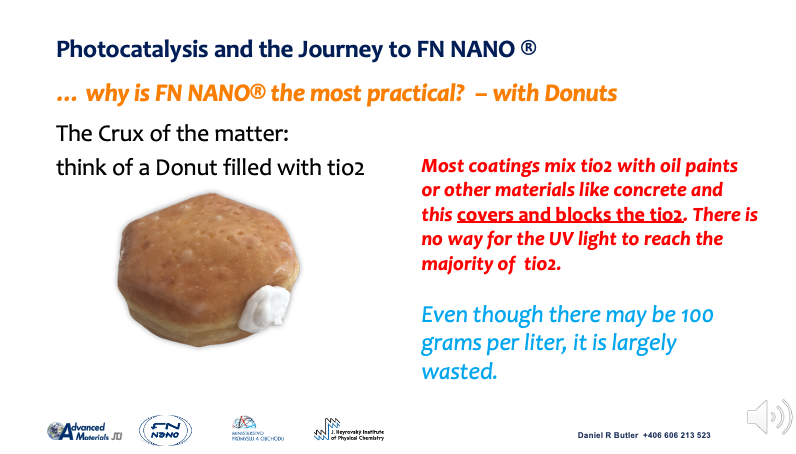
(2)
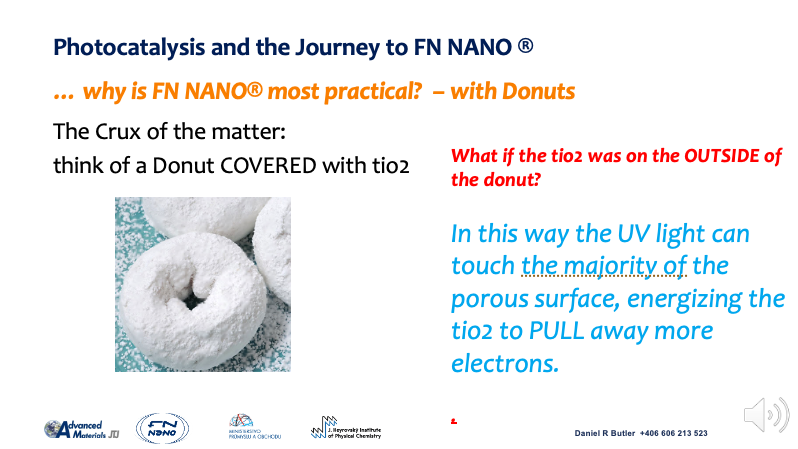
(3)
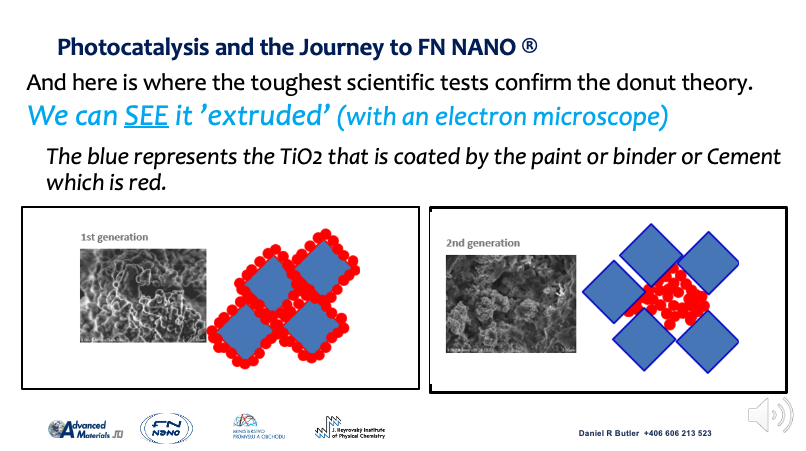
Working for a long time, Killing things.
The red fence board was painted with FN NANO over ten years ago (actually it was only used by the worker to empty residual FN from his brush, In one coating.) BUT , no algae can grow on it, AND, FN lasts a long time, protecting the board from erosive forces. (even in rain)
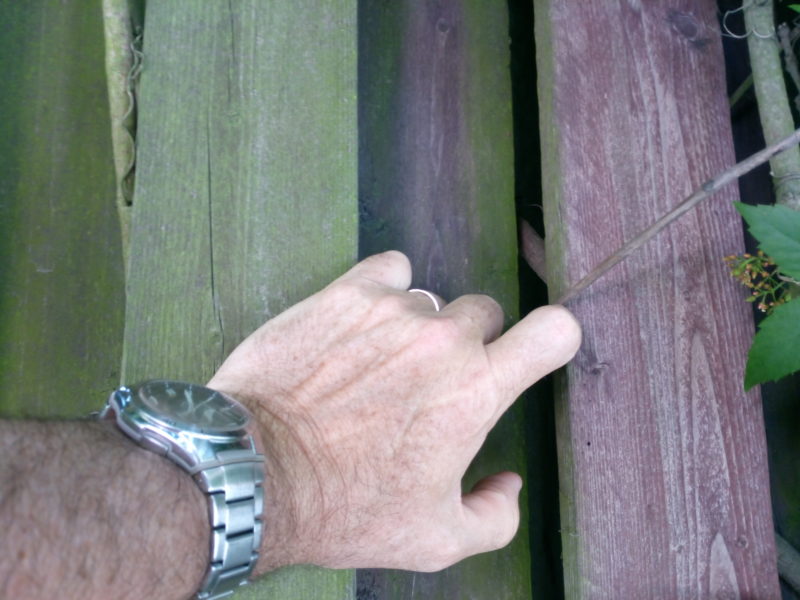
The Barrandov wall should explain how the activity of FN is self cleaning the wall, but also it is working to clean the air as well. The darker area in the last photo show where FN is not present. This self-cleansing activity not only proves the functionality, but it also prolongs value. Buildings that suffer from dirt and sediment from high traffic will appear clean, or as if they were recently painted.
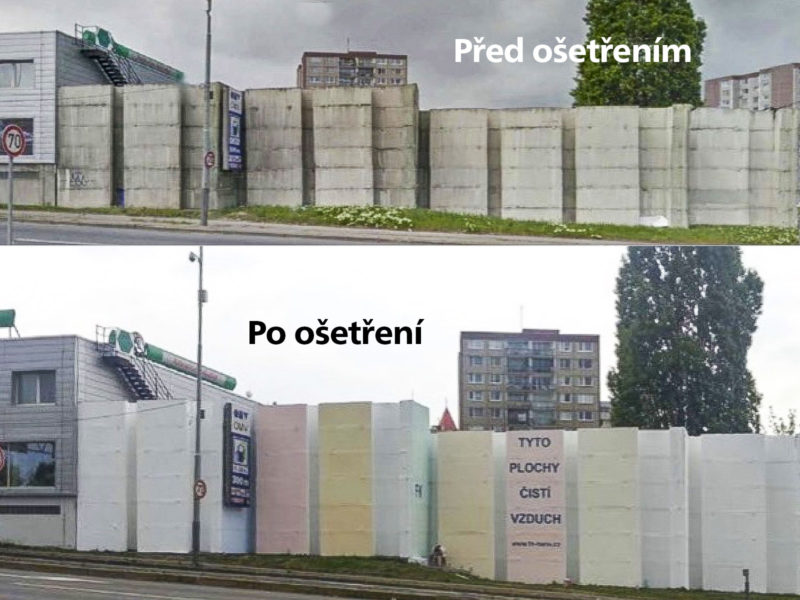
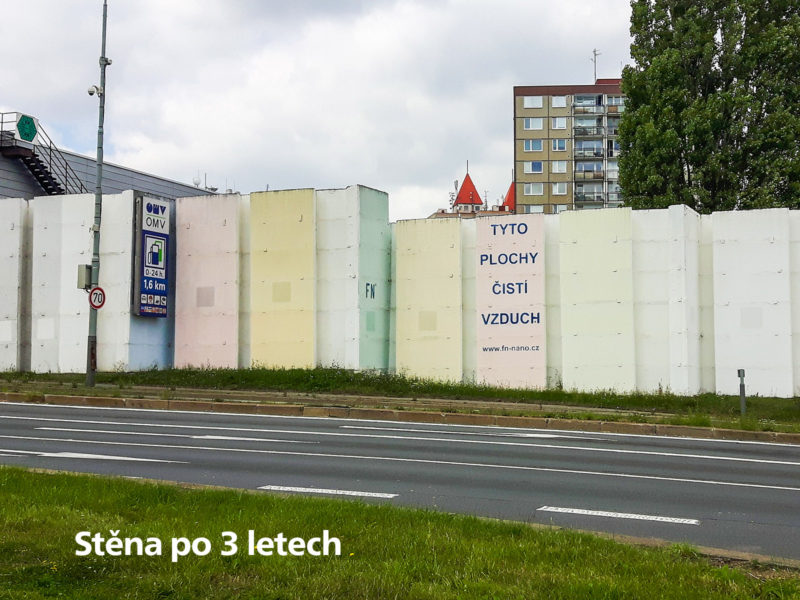
History
- discovered in Japan 1967, while seeking to separate elements of water (H and O) The first instance of photocatalytic coatings was in Japan where Dr Kobaijashi discovered the process and the reaction of UV light taking eleltrons from compounds.
- Principle, UV and Tio2 steal electrons from compounds, breaking the apart, dissolving them.
- Scientific papers on google scholar
- One major use was for the SARs crisis in 2002-3 and the Japanese used photocatlytic coatings extensively, indoors and out.
- One

- Recent history: In 2003 Dr Jan Prochazka was approached by a client that made gardening concrete figurines to solve the problem of mold and algae growing on them. Dr Prochazka knew of PCO and attempted to utilize this technology but was unhappy with the results. This led to his tinkering with various coatings to improve the activity of the tio2. It was his discovery after long research and experimentation that he identified the binder solution to allow for great “Extrusion” of the tio2. The garden figurines were terpasliky, or garden gnomes in English. Soon after that Dr Prochazka experimented and tested the new formulation on areas other than surface protection and discovered the huge increase in efficiency in air purification.
When comparing our product to other coatings we have proven the exceptional power of FN NANO. However, this document is not to be shared because to do so would violate an EU competition law. (this actually happened).
In the screen shot below the graph shows the decrease in NOX compared to 4 products that are typical Tio2 coatings available on the market. We have recently done a very similar comparison with a longer list of products.
Commercial photocatalytic coatings – Air purification technology. Comparative study
The reduciton of NOx when the light is turned on, is shown below for a number of FN products as well as the pure powder form of tio2 (Aeroxide). At the top you can see the grouping of the 4 competirors that had a lower reduction result.
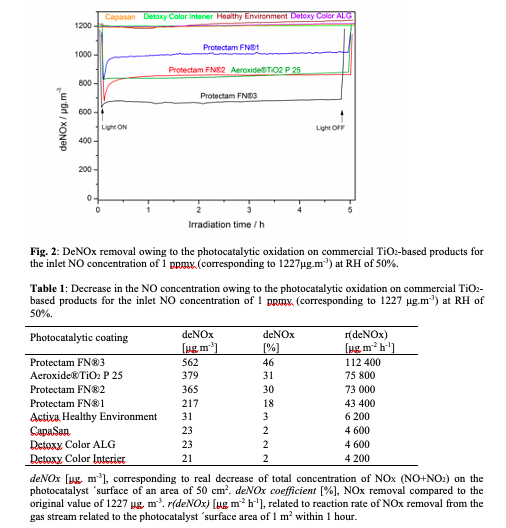
On the pages indicated in the drop down menu screenshot below, you will find independent tests, certifications, (conducted by official state offices such as the Building Inspection office), university research laboratories and private testing offices. There are also technical sheets and material safety data sheets (the MSDS are not public but if you need them I can send them). Here also are the patents. The patent is about the binder which allows for the Nano tio2 to be extruded, or to make it rise to the surface of the binder adhesive, making the efferct much more powerful.
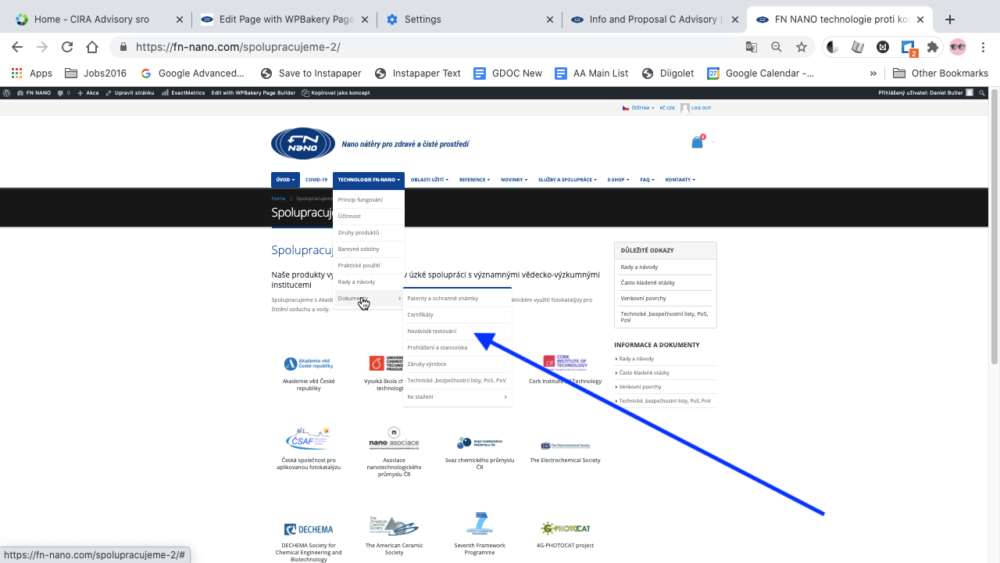
Czech language Independent Testing https://fn-nano.com/nezavisle-testy/
![]()
- Outsider explanation of tests for efficiency and how outside influence affects the rankings. This section should give you a sense of how the tests and research is performed, how the laboratory situations Measurement and qualification of photocatalytic coatings, for the purpose of air purification today, is normally done according to a series of standardized tests (under different standards, depending on the country), Some major standards used are
- International Standards Organization (ISO)
- The British Industrials Standards
- Japanese Industrial Standards (JIS)
- The German Norms Institute (DIS)
This document lays out a number of ISO standard tests, where you can understand the precision necessary, setting out precise testing procedures and designs for the apparatus. ISO Standard Study
In brief, these require measurements of photocatalytic materials by
- applying the PCO to a glass slide, or a concrete block of about the 6 centimeters by 10 centimeters size
- placing it in an air-tight container that is made of glass which allows UV light to pass through it
- a uv lamp place so that the uv rays of a certain intensity can be shown from it
- introducing measured amounts of gasses into the container delivered by tubing
- and measuring his gas upon its exit.
The pollutant gases introduced could be Nitrogen oxides (a mixture of NO2 and NO), toluene, formaldehyde and others/ These are introduced individually(except for NOx)(*)


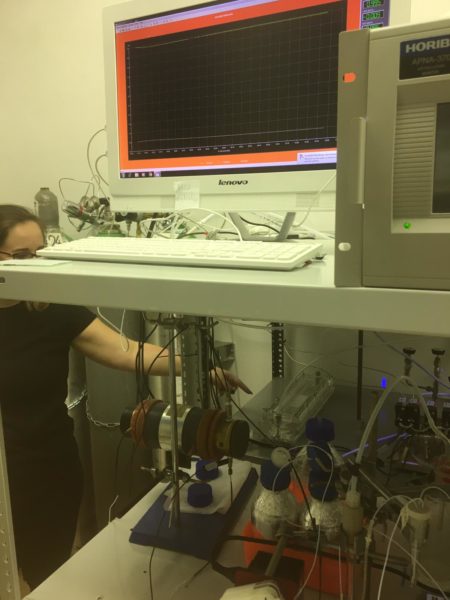
In addition, there are other types of experiments that are similar but utilized when organic material such as viruses or bacteria destruction is measured.
The goal of these standardized tests are to determine the removal to the introduced material (gases, biological material) over a set time, to arrive at values that are easily recognizable to the technicians familiar with the tests.
Criticism: While research is being done constantly in different labs across the world, there is always the issue that these finely tuned experiments might not be accurate. Simple unexplained variances appear all the time. And, more importantly, the tests are done with single gases, in ideal situations.The research grant project seeks to deploy a testing device in the real world situation where a mixture of gases are present on a street corner that suffers great traffic. This may lead to a more inclusive method that can be extrapolated depending on the intensities of pollution with varying makeups.
– Uses General based on proven activity (and the next areas of study)
Pollution removal
Airborne and sedentary bacteria, viruses, allergen
Surface protection
Surface self cleaning
Heat reflection (urban heat island )
Food storage (FN not only removes mold and other destructive agents on food, but it also lowers the amount of naturally ethylene that makes fruit ripen quickly Ethylene Removal Produce Storage )
Greenhouse gases removal (research work underway at UFCH – methane, ozone)
Pesticide replacement (soon to be studied)
Water purification (a separate product for home swimming pools (FN Aqua) but has been extensively studied for drinking water purification by many other researchers)
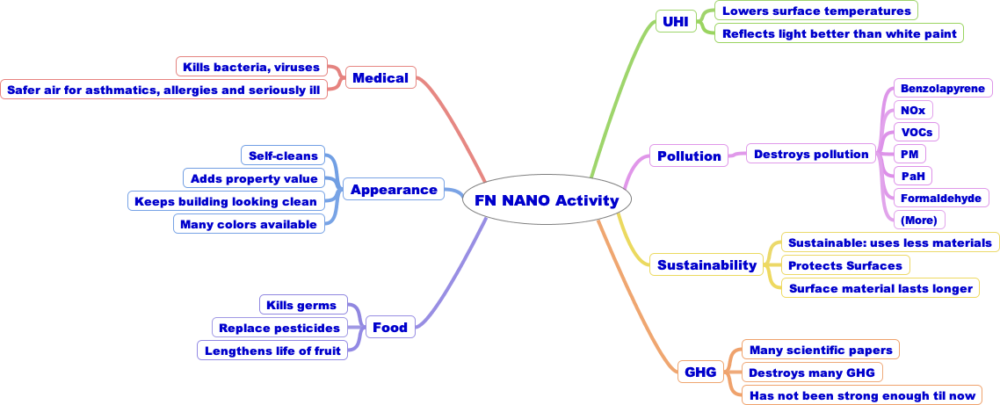
This list depicts all the current end users.
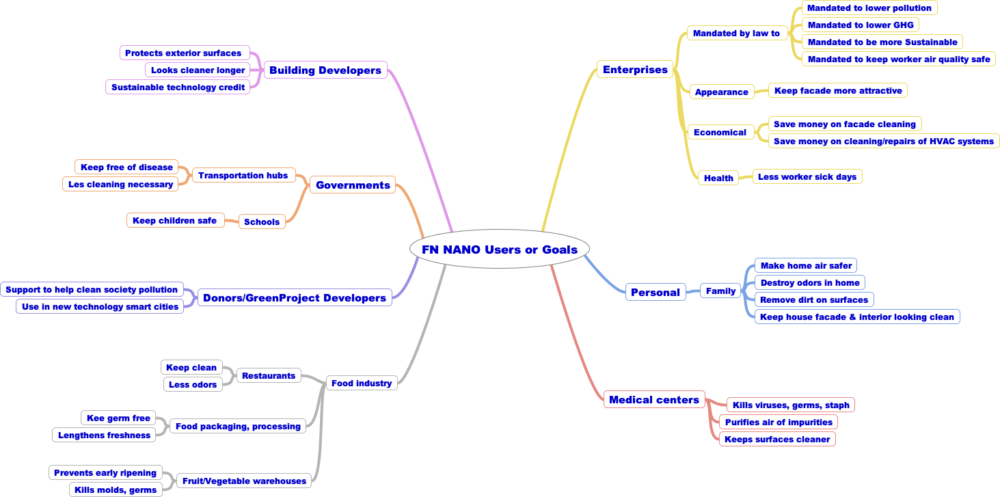
On the site you can see under Reference there are many examples of applications done over the last 5 years.
Hospitals
Airports
Urban pollution remedy program
Building protection
Wellness centers
Homes
Office buildings
Factories (& other industrial site)
Restaurants
Schools
Interior examples can be found on this page: https://fn-nano.com/reference-interiery/
Exterior examples, facades and monuments: https://fn-nano.com/reference-fasady/ , https://fn-nano.com/reference-pamatky/
FN Nano is a watery solution and needs special care to apply. It should be applied in three layers, very thin layers about 1/10th as thick as normal paint. It can be sprayed on or applied with a roller or brush. 1 liter should cover 10 m2, if it is mostly flat. Other buildings with much contoured surfaces might be lower around 7 m2 per liter. We strive to train painting companies or end industrial clients and we provide many video guides, as well as a written instruction manual.
See this page (Czech language: instructions summary) for more details, but a longer manual is supplied to users.
FN comes in varieties:
FN 1 is best for outdoor, moldy situations but can be used indoors.
FN 2 is our main seller, best for all uses.
FN 3 has a higher content of tio2, and yields the best test results, BUT is a bit chalky and may rub off on clothing. It is therefore, best for ceilings.
FN 1 Biomax contains a biocide. This is the only one that works with chemistry (the others are purely mechanical in their activity to disintegrate compounds).
FN Wood comes in shades similar to wood stains.
FN Transparent is 90% transparent and might be used on darker walls, whereas the others might show a dusty appearance because of the extrused tio2. We recommend that FN should be used mostly on ligher colored walls.
FN is best on vertical surfaces but can be used on rooftops (tiled, terracotta), but our functional guarantees (7 to 10 years) are less for roofs and angled surfaces due to rain friction. FN cannot be used on Hyrdophobic or high friction surfaces. Not on glass, shiny tiles, door handles, or floors and walkways.
AIR METER:
There are normal, hand-held air meters available that can measure VOC, NOx, Particulate matter, and others. (Linkphoto). Operating this in a room at a client will demonstrate how bad the office air can be. We take photos before and after. The results are always great.

ATP TESTS:
This is a test of biological material on surfaces. They use these at hospitals to ensure sterile conditions. We have used this in demonstration at the institute where a room had a wall painted ten years ago and the results of bio material on the wall is minimal. And, a wall in the same room that was NOT coated, had very low bio material. A few office rooms down the hall, with similar occupants had very high results; these are normal everyday rooms full of bacteria.
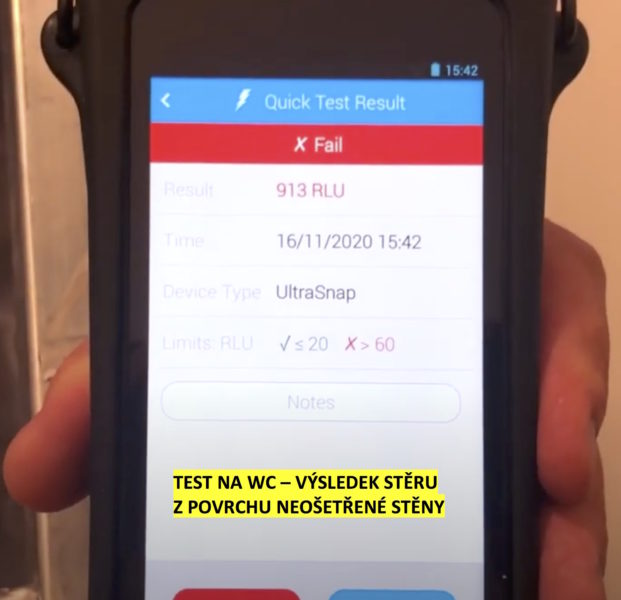
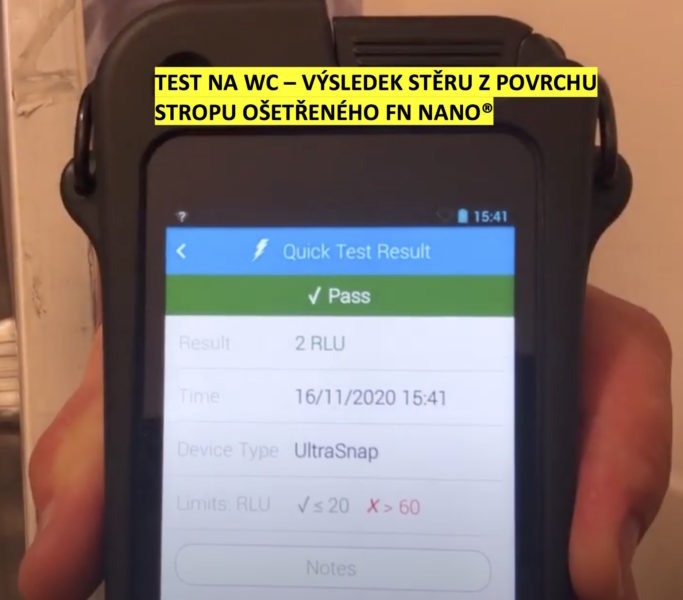
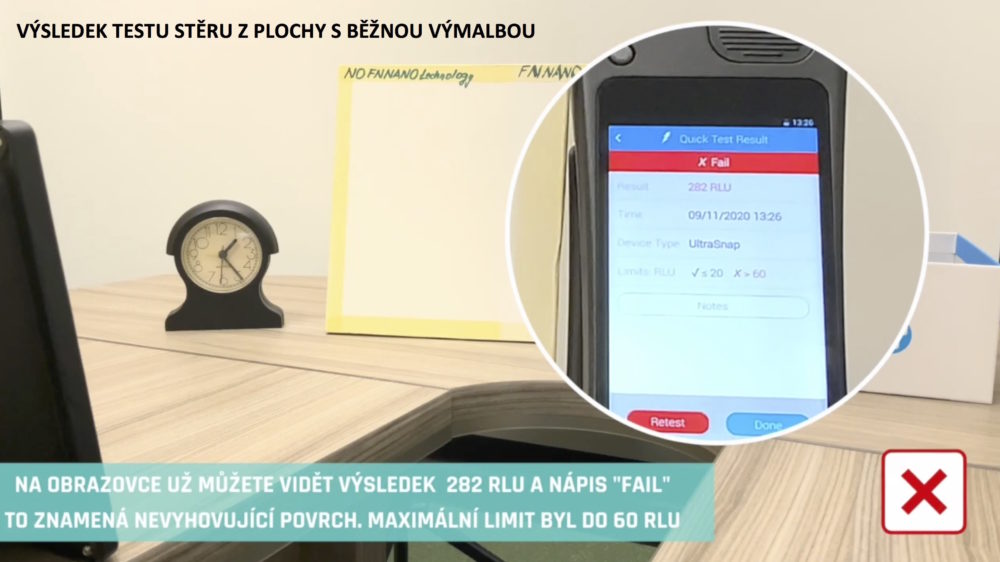
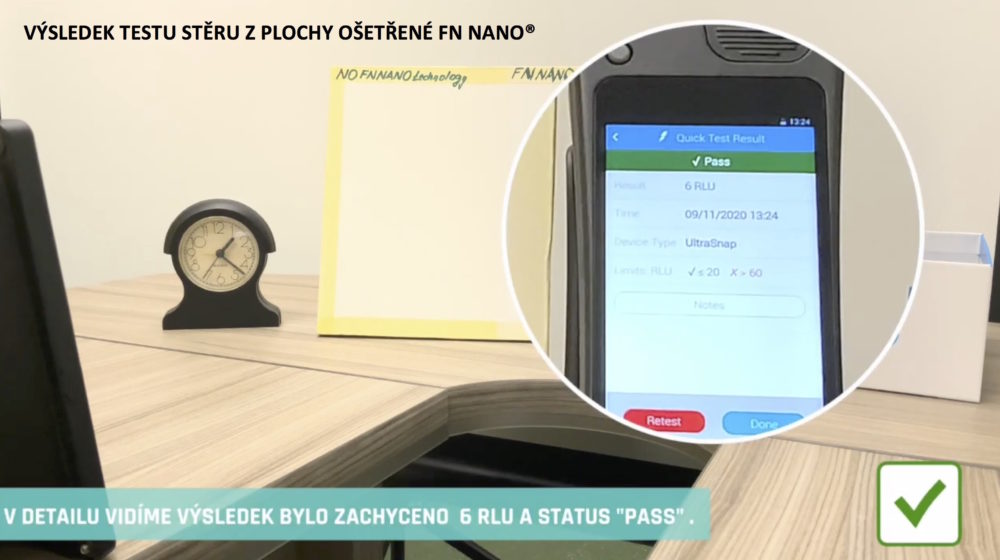
LOGICAL ASSUMPTIONS:
We stress that the use of FN on walls and ceilings is the best long term solution for the removal of viruses, bacteria, allergens, odors, VOCs and many other contaminants. The reductions shown in before and after tests may not show precisely the reduction and containment of viruses, but it is logical that if all other biological actors are reduced, then we seek to present that viruses are similarly reduced. The long term effect (better than on the spot sprays that are hazardous and wear off) and the fact that this is a purely inorganic coating, reducing contaminants without chemicals, (it is a Mechanical process), is a strong recommendation.
ON SITE DEMONSTRATIONS (NANO-PANEL):
When visiting a potential client, taking in large wall hangings (paintings) done with FN NANO, will make a huge improvement even if only 10% of the wall space is effectively acting on the air in the room.
We seek distributing partners around the world where we offer exclusive and non-exclusive distribution; this requires the entities to
– Pay a license fee (which is really a pre payment for an amount between 1 and 5,000 liters annually which comes with discounts.
In Czech Republic we have mainly worked in these ways
– We work with painting and remodeling companies that can offer FN as an additional product (up sell).
– We have approached institutions directly or through referrals, such as a school district that won an award for fighting coronavirus. In this case we normally recommend a painter firm, if they do not have their own.
Important to note here is our licensing program to educate the painter company and give them a certificate. Its a one-day course. (In global locations we must travel there at the entity’s expense). The education is important to teach the painter company what surfaces are best, how to apply (it takes some particular but easy instructions) and other information about the uses.
Working at the J. Hejrovsky Institute of Organic Chemistry.
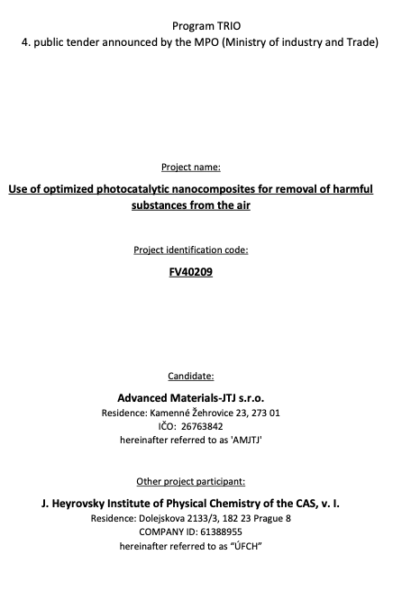
Researchers from Universities.
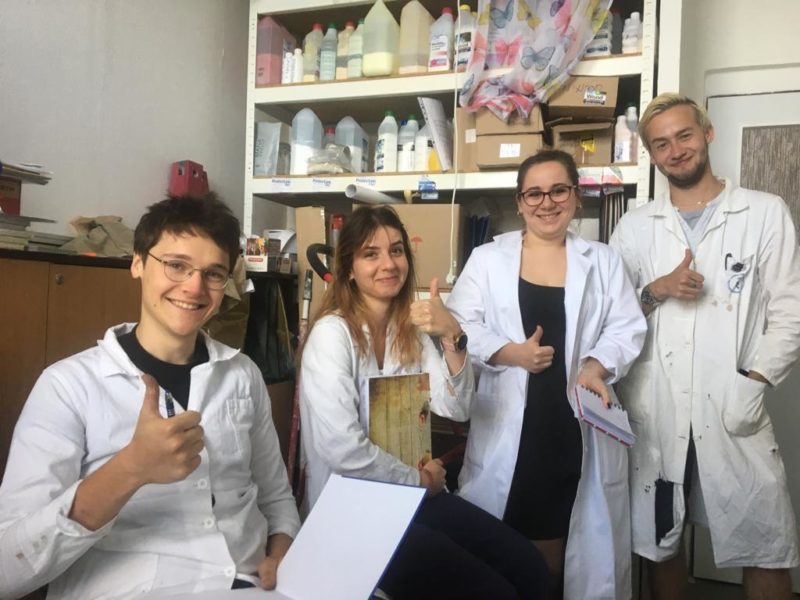

Grant work in detail.
Lead scientists. Doctor Jiri Rathousky, Dr Radek Zouzelka
One of the outputs of the Program Trio research is a real program to be deployed in city centers, to reduce pollution.
Until now no PCO was strong enough to be feasible. Where most PCO would require 700 square meters to offset the pollution of one diesel car, FN NANO needs to paint a wall with only 15 Square meters and the emissions and particulate matter of a diesel car would be totally offset for 10 years (the lifetime of the coating guarantee but perhaps longer).
Thus with the requirement of less space to be painted, it is conceivable that painting only 5 to 10 % of buildings in a city center would be enough to remove pollution to limits below the penalty barrier, and also lower.
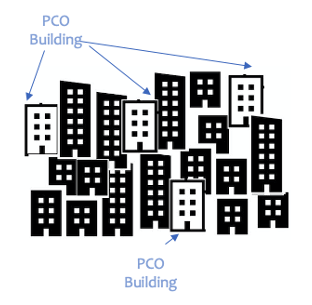 Only 5 to 10% of buildings needs to be coated to make a big difference.
Only 5 to 10% of buildings needs to be coated to make a big difference.
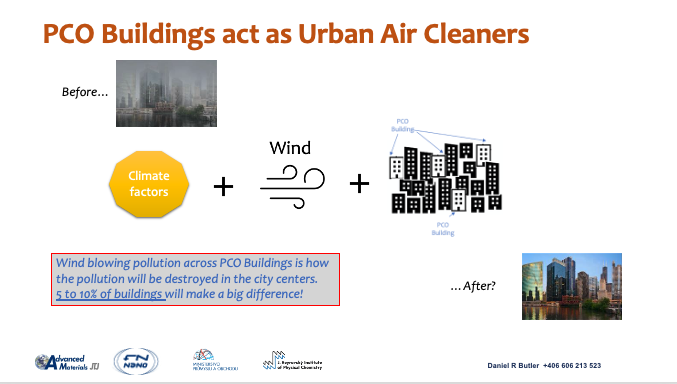

Perhaps the most unique variables found in the typical transportation building is the high number of humans passing through. It is considered second only to the venues for sports, theatre or music where high amounts of people are collected in one situation.
Of all the situations here, this is perhaps the most dangerous in our increasingly global growth and interaction. More and more travellers are increasing the risk of remote diseases spreading to new and more fertile locations. It is imperative that all tools should be used to contain what could be the next illness of epidemic proportions.
There is research supporting the use of Photocatalysis to reduce greenhouse gases in the atmosphere.
Curiously photocatalysis was not included in the Approved Methodologies listed on the UNFCCC website that are used in CDM or JI carbon offset projects. (https://www.cdmpipeline.org/cdm-methodologies.htm) This is because the research focusing on GHG removal only just began in mid 2010s, and, more importantly, there were no PCO strong enough to make a dent in the reduction of GHG.
One such research here: Fighting global warming: The potential of photocatalysis against CO2, CH4, N2O, CFCs, tropospheric O3, BC and other major contributors to climate change “Highlights
► Photocatalysis can destroy all long-lived well mixed GHGs: CO2, CH4, N2O, CFCs, HCFCs.
► Photocatalysis can also eliminate short-lived climate forcers soot, BC, O3, NOx, SOx.
► Indoor and outdoor large scale local pollution remediation applications are given.
► Self cleaning coatings, paints and glass for urban use are commercially available.
► In the near future photocatalysis can help to fight global warming and climate change.”
We hope to change this by proving that FN NANO can remove GHG and be considered in the Approved Methodologies listing.
Add text
Place holder
Placeholder
daniel.butler@advancedmaterials1.com +420 606 213 523
